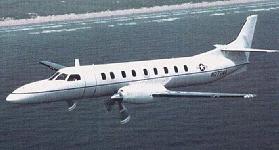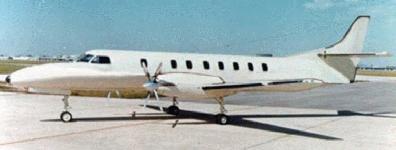




Specifications | |||
| MODEL | C-26A Metro III Model SA227-AC |
C-26B Metro 23 Model SA227-DC |
UC-26C Merlin IV-C |
| Engines - number | 2 | ||
| Engines -Type | (with Dowty Rotol propellers) (with McCauley propellers) |
||
| Engine Mfg. | Garrett (AiResearch) | ||
| SHP | 1100 | 1100 | 840 |
| Length | 42.17 ft | 59.33 ft | |
| Wing Span | 46.25 ft | 57.0 ft | |
| Height | 16.83 ft | 16.67 ft | |
| Crew Seats | 2 | 2 | 2 |
| Passengers | 22 | 19 | 14 |
| Ramp Weight | 14,110 lbs | 16,600 lbs | 12,560 lbs |
| Takeoff Weight | 14,000 lbs | 16,500 lbs | 12,500 lbs |
| Landing Weight | 14,000 lbs | 15,675 lbs | 12,500 lbs |
| Zero Fuel Weight | 13,130 | 14,500 lbs | 8,320 lbs |
| Usable Fuel | 652 gal | 652 gal | 544 gal |
| Usable Fuel (@ 6.7 lb/gal.) |
3,480 lbs | 3,480 lbs | 3,645 lbs |
| Max Range (NBAA IFR reserves) |
2,025 nm | 2040 nm | 1,580 nm |
| SPEED Max Oper | 248 (ktas) | 248 (ktas) | 248 (ktas) |
| Ceiling | 31,000 ft | 25,000 ft | 30,000 ft |

